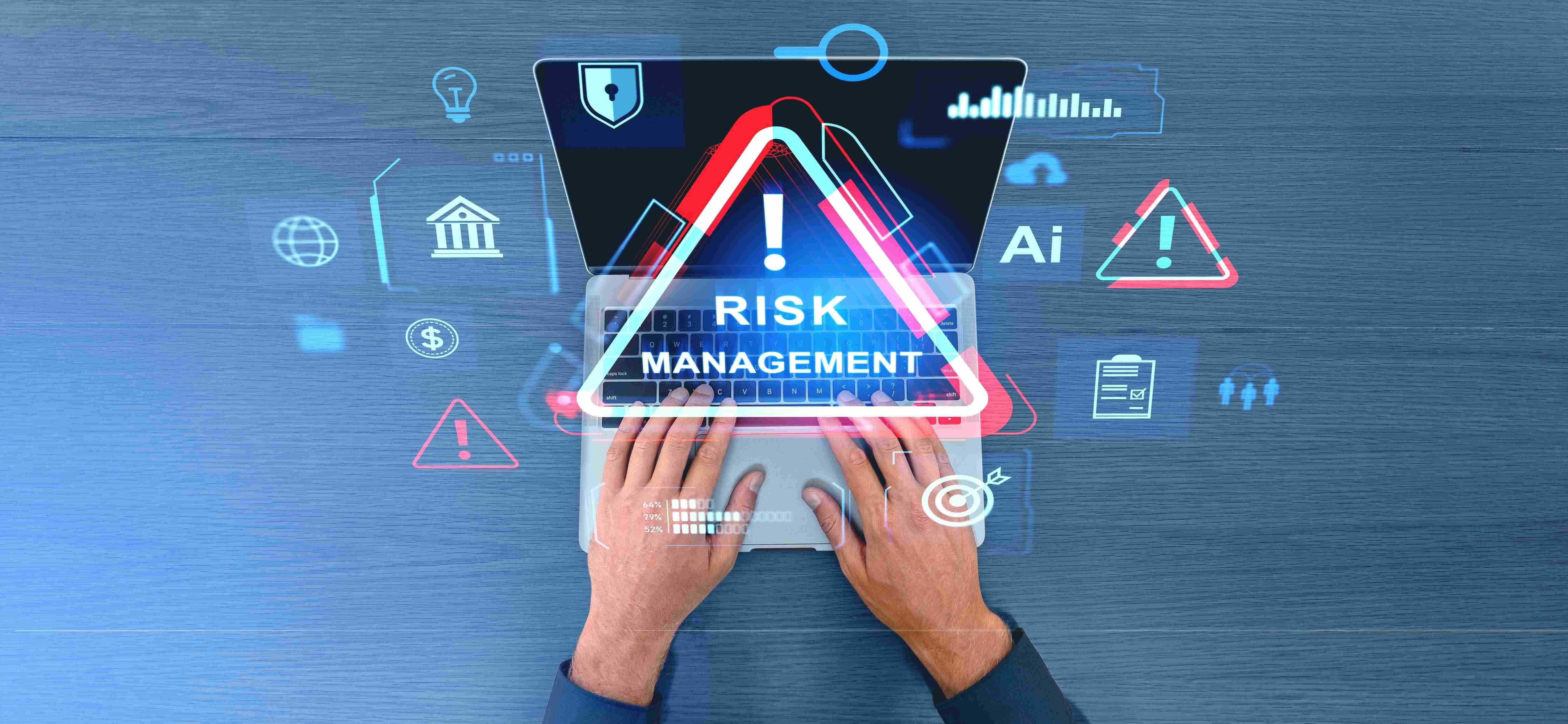
Introduction
Across industries, AI is revolutionizing risk management by overcoming the limitations of traditional methods. It achieves this by analyzing large datasets to identify emerging threats and anomalies, while generative AI interprets unstructured information and provides clear answers to complex risk-related questions.
To explore these advancements, Sahaj Software recently hosted a roundtable with leaders from multiple industries in New York. The conversation revolved around specific risk challenges in sectors like finance, healthcare, pharma, manufacturing, and publishing, emphasizing the need for AI-driven solutions. This blog distills the key insights from that session, combining highlights from the kickoff presentation with practical lessons shared by the participants. It concludes by emphasizing the importance of human-AI collaboration, practical steps for AI adoption, and investing in both technology and a data-driven culture.
Risk Management Landscape Across Industries
Modern risks cut across every industry, and each sector faces its own challenges:
Financial services manage credit swings and liquidity but now also confront high-speed trading failures, cyberattacks, and tougher compliance rules.
Healthcare deals with patient safety while also guarding against data-privacy breaches, medical errors, and large-scale public-health crises.
Pharma balances R&D uncertainty with strict regulation, supply-chain fragility, and liability over drug safety.
Manufacturing must keep equipment running, protect workers, and handle global supply disruptions that affect quality and output.
The New York Fed notes that today’s “unprecedented interconnectivity” lets a local shock ripple across sectors within hours. AI systems that watch multiple data streams, raise early alerts, and link the information are becoming essential for staying ahead in today’s rapidly evolving risk landscape.
AI and ML Verticals Enabling Risk Intelligence
Statistical modeling and machine learning are already used in risk management, but AI with large language and multimodal models can greatly enhance risk intelligence. These models understand a vast web of knowledge and can infer from various data types, improving risk insights. Key to this are the following three AI/ML pillars for transforming risk management.
Data-Driven Insights: AI systems ingest and analyze vast, diverse data streams to surface hidden risk signals and generate forward-looking predictions. In finance, AI models scan trading records and client behavior to flag early signs of credit stress or rogue activity. In supply-chain operations, they correlate weather reports, geopolitical news, and supplier performance to warn of looming disruptions. Because the models learn continuously from fresh data, their accuracy improves over time. The result is a richer, fact-based view of the risk landscape that lets organizations act before issues escalate.
Real-Time Monitoring & Detection: Intelligent algorithms can provide 24/7 surveillance of risk indicators and send instant alerts at the first sign of trouble. A cybersecurity model, for example, can spot an unusual login or data-exfiltration pattern in seconds, while a manufacturing model may detect a spike in machine vibration that predicts imminent failure. By surfacing threats in real time, these tools shift teams from reactive damage control to proactive prevention, cutting both downtime and loss. As noted by Public Sector Network, the result is a shift from reactive firefighting to proactive mitigation.
Augmented Decision-Making: Generative AI models add a cognitive and natural language layer to risk intelligence. Large language models can read regulations, contracts, and incident logs, then answer complex questions or draft policy updates in plain English: similar to McKinsey’s “virtual expert” for compliance teams. This augments decision-making by giving risk professionals deeper and faster intelligence at their fingertips and acting as a co-pilot. However, human oversight is valuable to validate outputs and guard against occasional errors or “hallucinations.”
Discussion Learnings
Traditional periodic risk assessments are transitioning to continuous, real-time risk intelligence. Rapidly evolving threats and uncertainties demand agile, proactive risk management, requiring organizations to constantly scan for emerging risks and respond swiftly. AI applications are transforming risk management, leveraging foundational AI/ML practices like pattern recognition, anomaly detection, and time-series forecasting. These techniques analyze vast, diverse data to reveal subtle correlations, identify anomalies in real time, and predict future risk trajectories, providing organizations with the foresight to intervene before risks escalate.
Industry representatives shared the risks that are pertinent to their domain and explored how AI might help.
Publishing: Editors worry that plagiarism, duplicate-book fraud, and leaks of draft manuscripts will rise as generative tools spread. The group discussed building a private AI assistant—kept entirely behind the firewall—that can check originality, draft marketing blurbs, and automate fact-checking without exposing sensitive content to public models.
Drug discovery: Teams cited incidents of fabricated patient records that compromise clinical trials. A proposed response is to train anomaly-detection models on trusted historical data and use synthetic benchmarks to test new records before they enter the pipeline.
Banking compliance: Participants from the banking domain described the heavy lift of matching every new product feature to an ever-growing rulebook. Participants outlined an AI workflow that first triages product changes against the right regulations, then uses retrieval-augmented language models to surface the exact clauses compliance analysts need. Further, the summary and retrieval capability of LLM-based agents can also be put to use to ease data consumption and regulatory validations.
Several challenges need consideration with AI-based automation. First, the efficacy of AI intelligence relies on timely data availability, especially for preemptive decision-making in cloud computing. Synthetic data can address data gaps, leveraging the comprehension and generation of multimodal LLMs. Second, massive data exposure and incentivized novelty in generative AI can lead to hallucinations and inconsistency. This limits usage in high-risk scenarios like health and finance to internal or productivity purposes. However, techniques like metrics, benchmarking, and LLM validators can improve measurement and validation. Knowledge grounding, reference configuration, and evolution are also useful for designing effective guardrails in high-error-cost domains.
Risk Management Use Cases with AI
AI, particularly generative AI, offers numerous high-impact applications for improving risk management. Here are some key examples:
Fraud Detection: AI models can identify real-time fraudulent transactions by analyzing spending patterns and known fraud behaviors. Generative AI enhances this by creating synthetic fraud examples to train detection models, preparing them for new scam tactics. For one of our projects at Sahaj, we trained deep learning models for fraud/non-fraud classification on financial news data. This was a multi-level AI pipeline, featuring text classification, extractive Q&A, and information retrieval.
Compliance Automation: AI engines can streamline compliance by automatically cross-verifying transactions against regulations in real time. NLP-based monitoring tools can promptly notify teams about potential compliance issues. Additionally, given the content-intensive nature of compliance, retrieval-based AI inquiry agents can facilitate efficient information search and improve accessibility.
Supply Chain Resilience: AI predicts and mitigates supply chain disruptions. Predictive analytics forecast issues, while generative AI simulates “what-if” scenarios to develop contingency plans. A recent advisory project at Sahaj on supply chain intelligence suggested the use of decision engines paired with generative AI agents for data summarization and tagging.
Cybersecurity Threat Detection and Simulation: AI-driven systems can detect anomalies that signal cyber attacks by analyzing network traffic and user behavior. Further, Gen-AI can create realistic attack scenarios for training security teams. Across sectors – whether in banking, healthcare, or critical infrastructure – this AI-boosted cybersecurity means fewer breaches and less damage when attacks do occur.
Customer Risk Profiling: AI enhances customer risk profiling by analyzing diverse data, including credit history, behavior, demographics, and online footprints, to create a comprehensive view.
Risk Assessment: Investment and portfolio risk management can leverage AI through enhanced analysis of both structured and unstructured data. Portfolio managers have always looked at numerical data – prices, economic indicators, company financials – to gauge risk. Now, AI allows them to also digest unstructured data like news articles, earnings call transcripts, and social media sentiment to get ahead of risk factors.
Challenges and Considerations in Adopting AI
While the potential of AI in risk management is exciting, it highlights certain considerations that come with it. Key concerns raised during the roundtable included:
AI hallucinations: LLMs can sometimes generate incorrect or fabricated information. In a risk context, a confident but false insight from an AI could lead to misguided decisions.
Validating outputs: Measurement is key when the cost of error is high. Metrics and frameworks to measure accuracy of Gen AI powered applications are tricky. However, a multi-pronged strategy can help mitigate some concerns.
Usage of general vs. domain-specific models: General models (like pretrained large language models) are powerful but might lack deep domain nuance, whereas specialized models can be more accurate for certain risk types but may require more effort to develop. The key is to find the right balance, sometimes even combining both approaches.
Data privacy and regulatory compliance: In industries like finance and healthcare, any AI use must adhere to strict data privacy laws and regulations. Utilizing sensitive data for AI can be risky if not properly governed. The group emphasized implementing robust data governance, anonymization techniques, and compliance checks so that AI initiatives do not inadvertently violate privacy rules or regulatory standards.
Over-reliance and human oversight: AI should augment—not replace—expert judgment; organizations must budget for the technology and the training it requires, and foster a culture that trusts data-driven tools while still challenging their outputs.
Conclusion and Key Takeaways
Embracing AI in risk management signifies a fundamental shift that intertwines technology, people, and processes. The roundtable highlighted the necessity for organizations to foster a culture of open innovation coupled with a pragmatic approach to validating AI-driven insights. A crucial element for successful adoption lies in establishing an optimal human-AI collaboration, where AI handles routine analysis and uncovers novel perspectives, while human expertise provides essential context, ethical judgment, and critical oversight.
Key Practical Takeaways
Start with specific pain points. Pick a contained risk—fraud alerts, compliance mapping, or supply-chain delay—and pilot AI there before scaling.
Use the “three-pillar” checklist. Every solution should combine data-driven insight, real-time monitoring, and human-ready decision support.
Build guardrails early. Put validation metrics, reference grounding, and oversight roles in place before a model goes live.
Balance model breadth and depth. Blend general LLMs for language tasks with domain-tuned models for high-stakes calculations.
Invest in culture, not just tech. Continuous risk intelligence only works if analysts trust the tools and leaders support data-driven decisions.
With those steps, AI becomes a catalyst for smarter, faster, and more resilient risk management—helping organizations stay a step ahead in an increasingly uncertain world.




